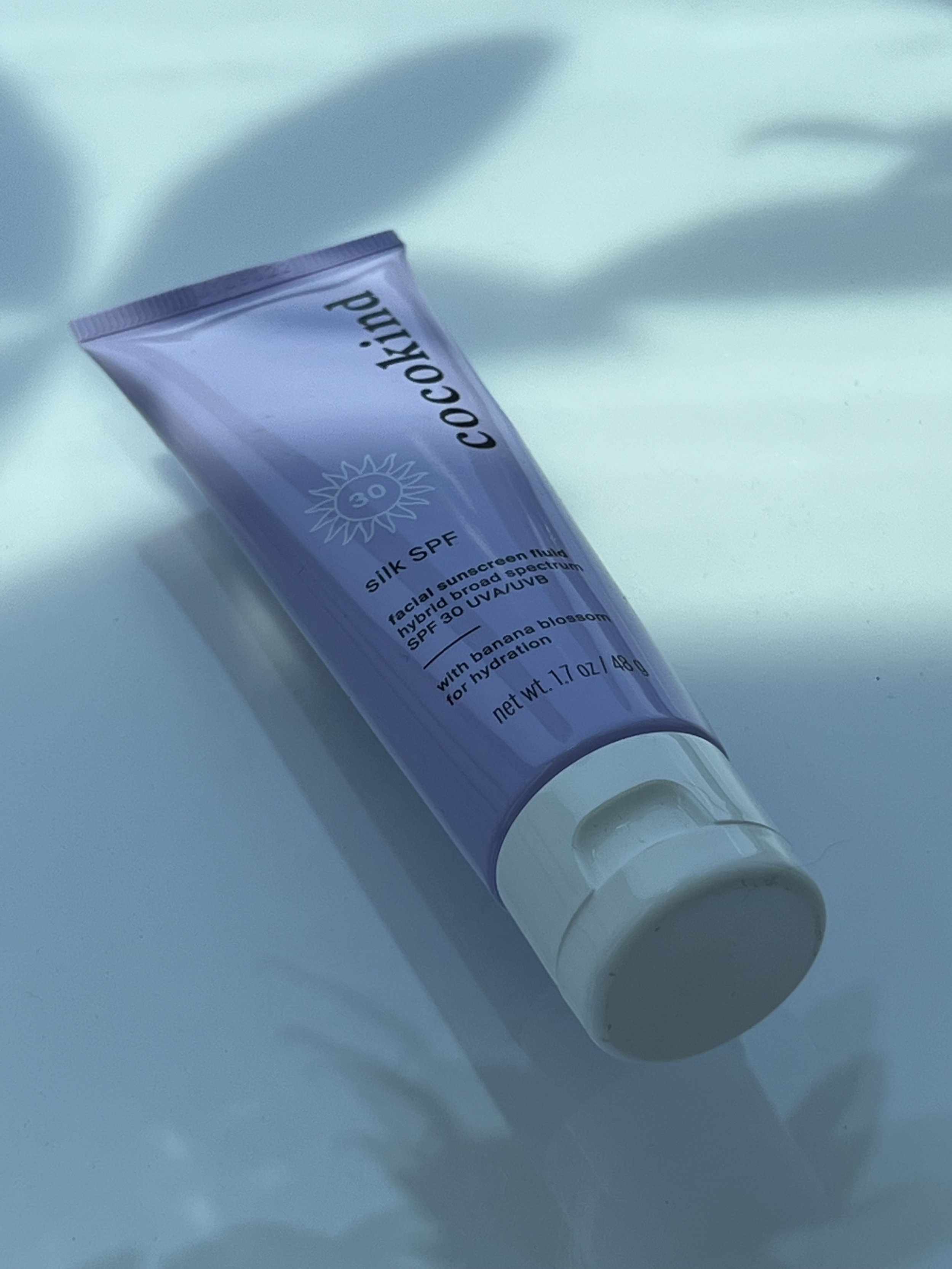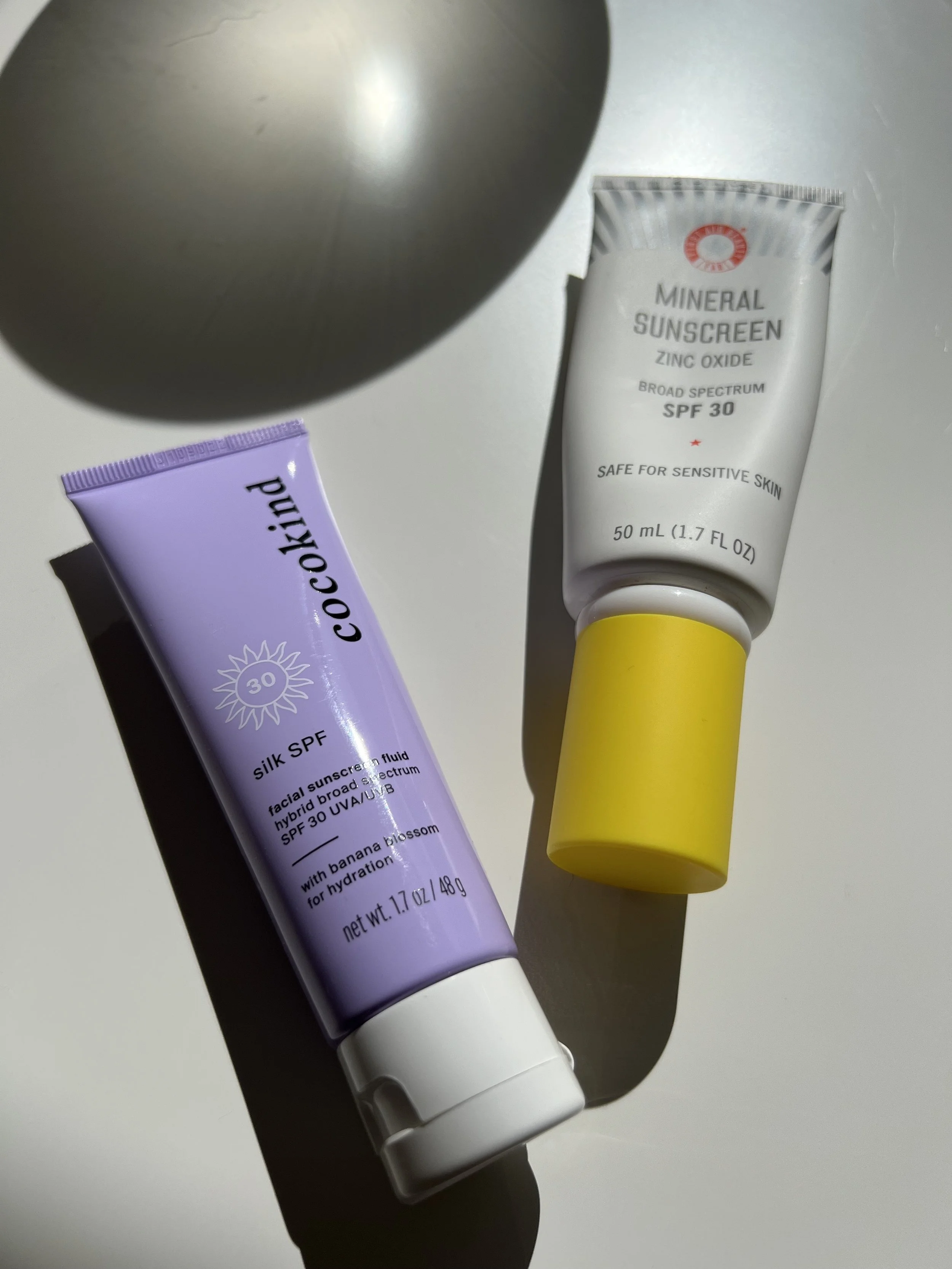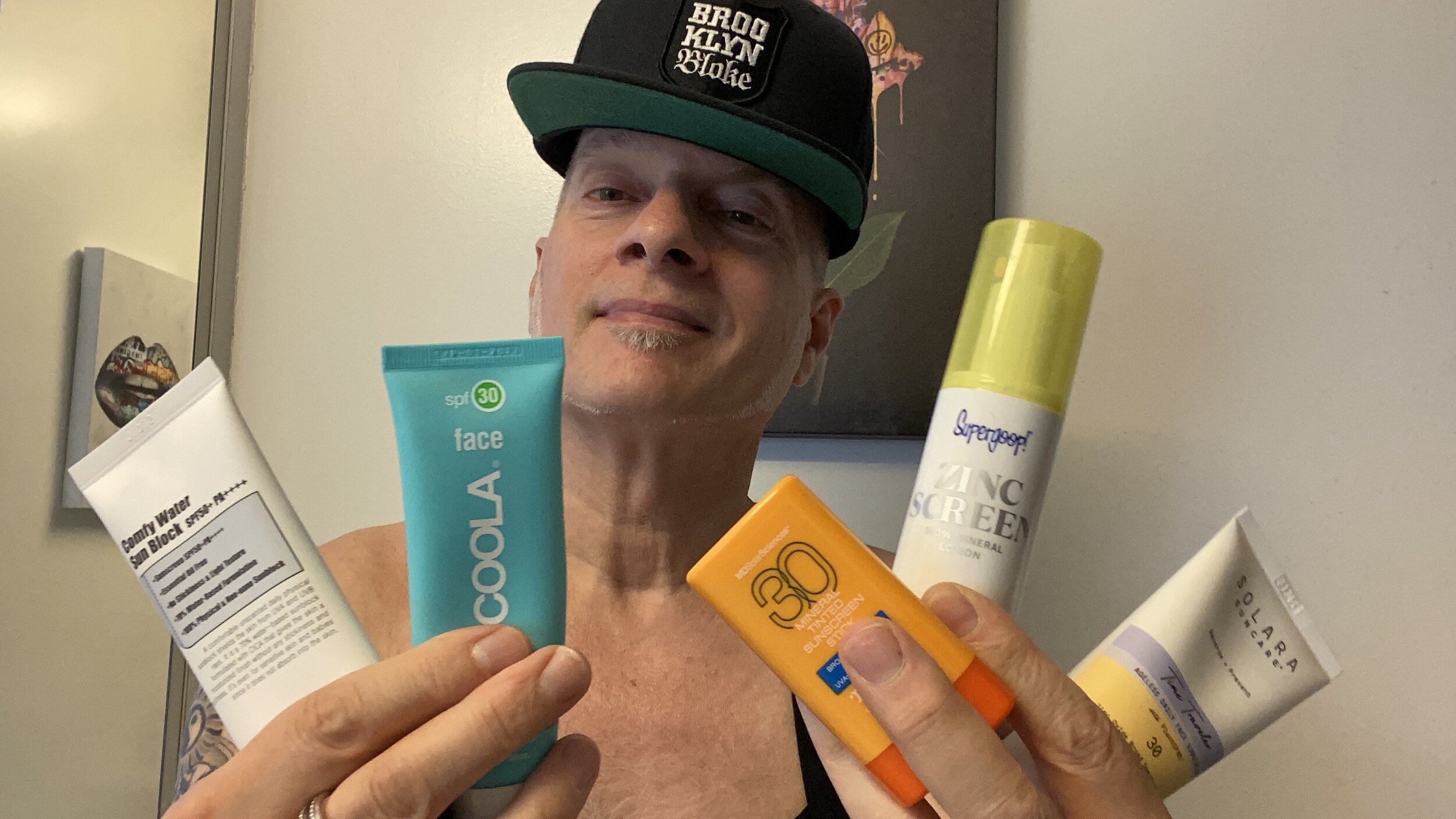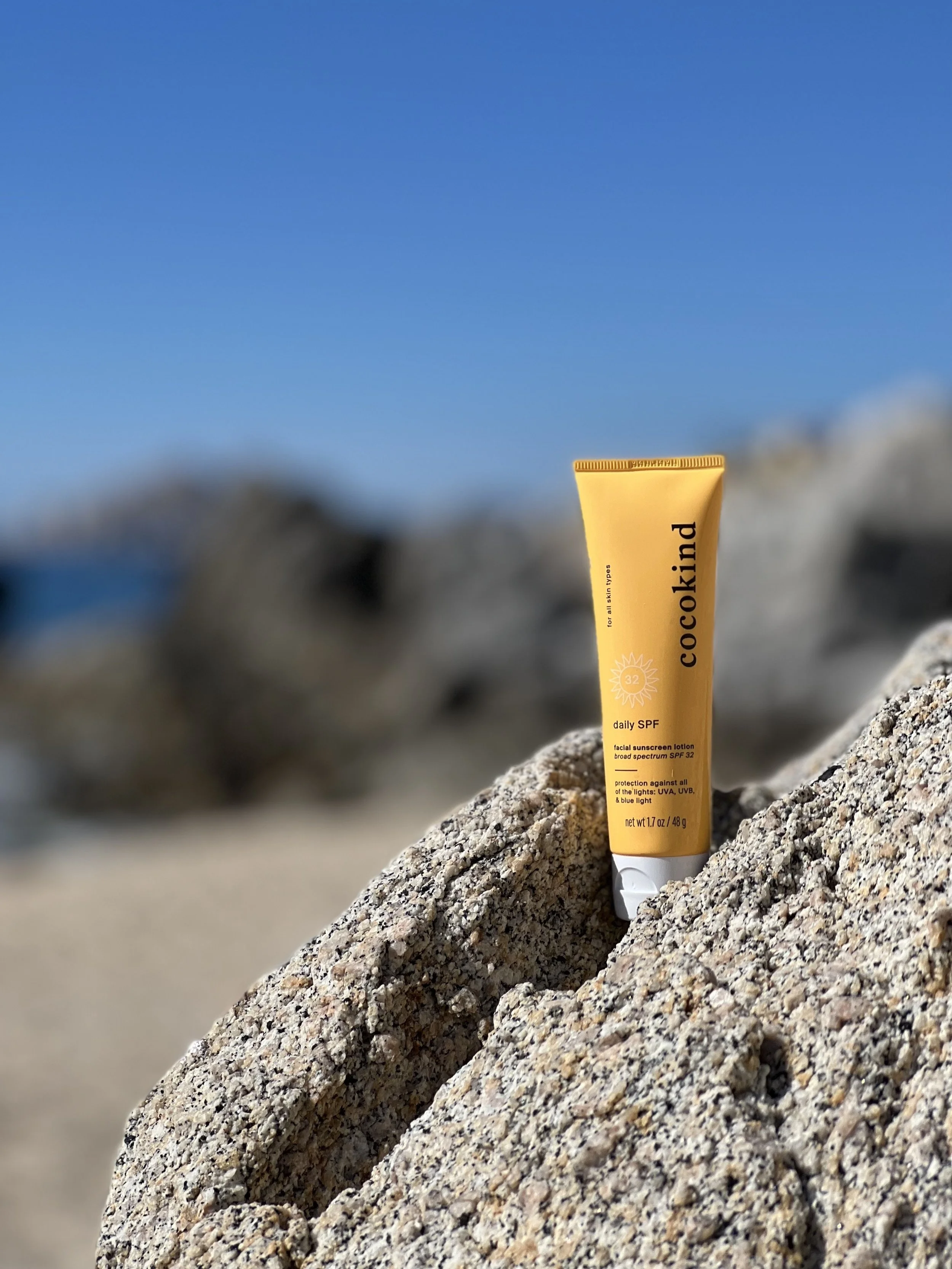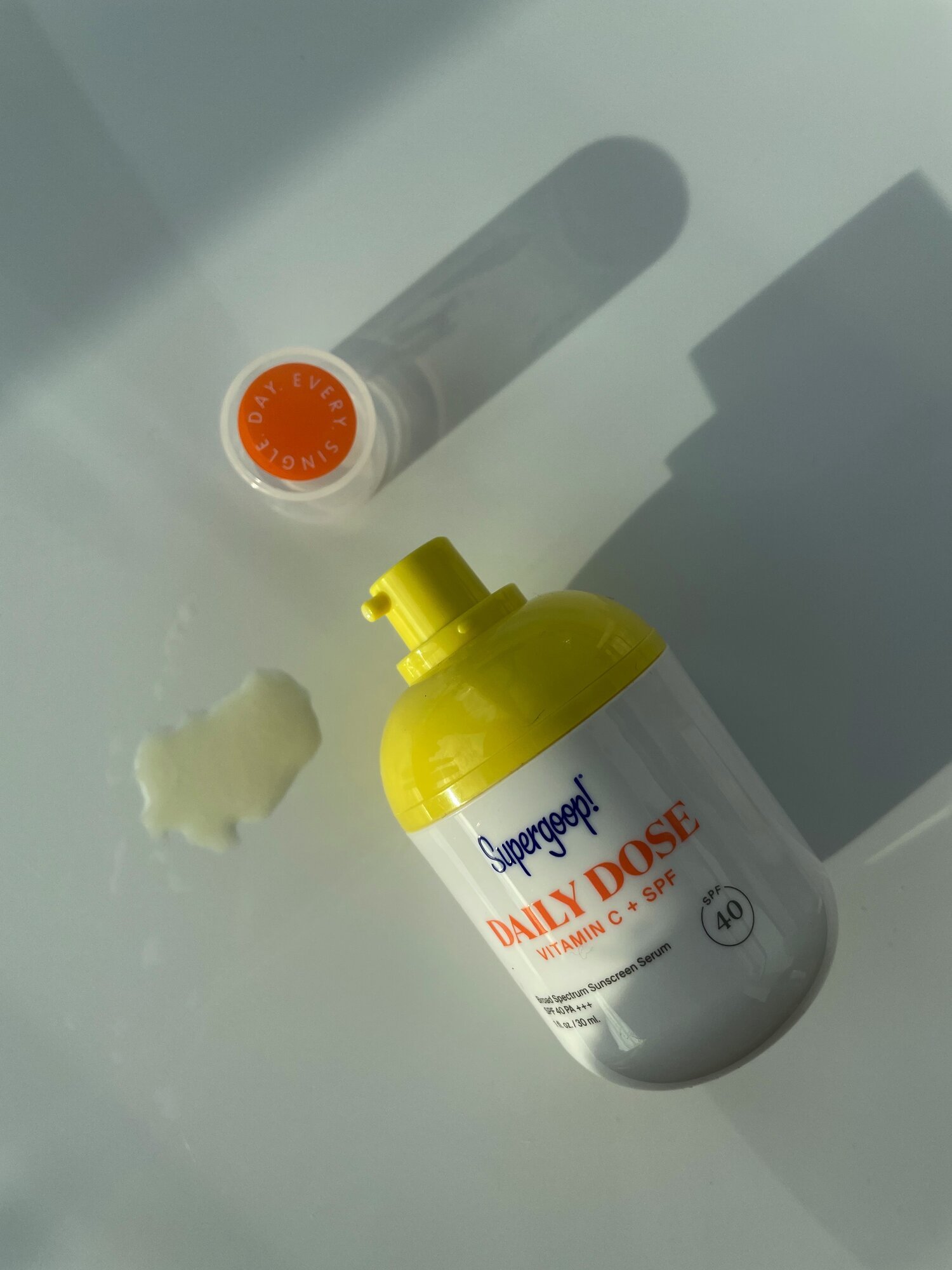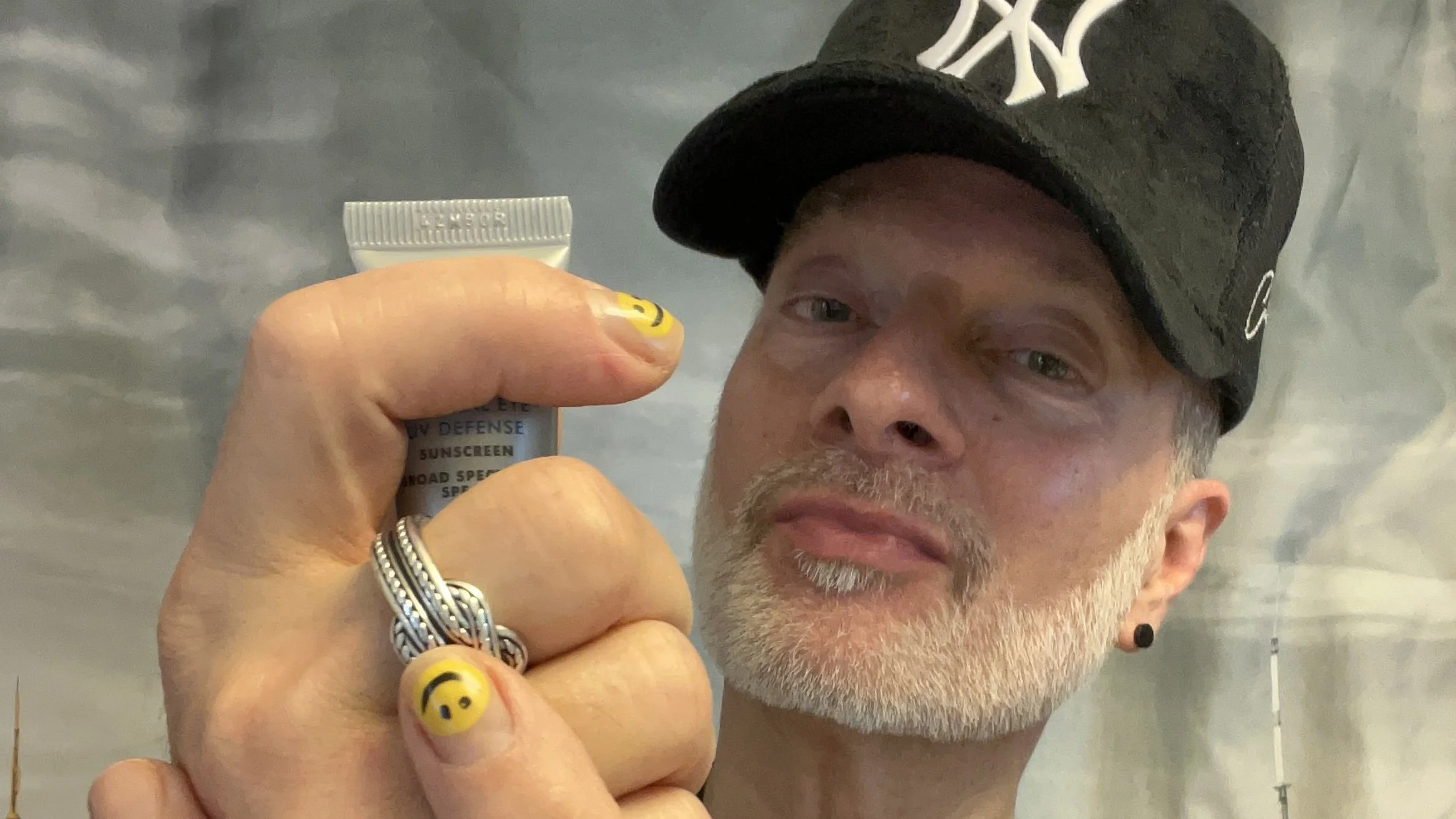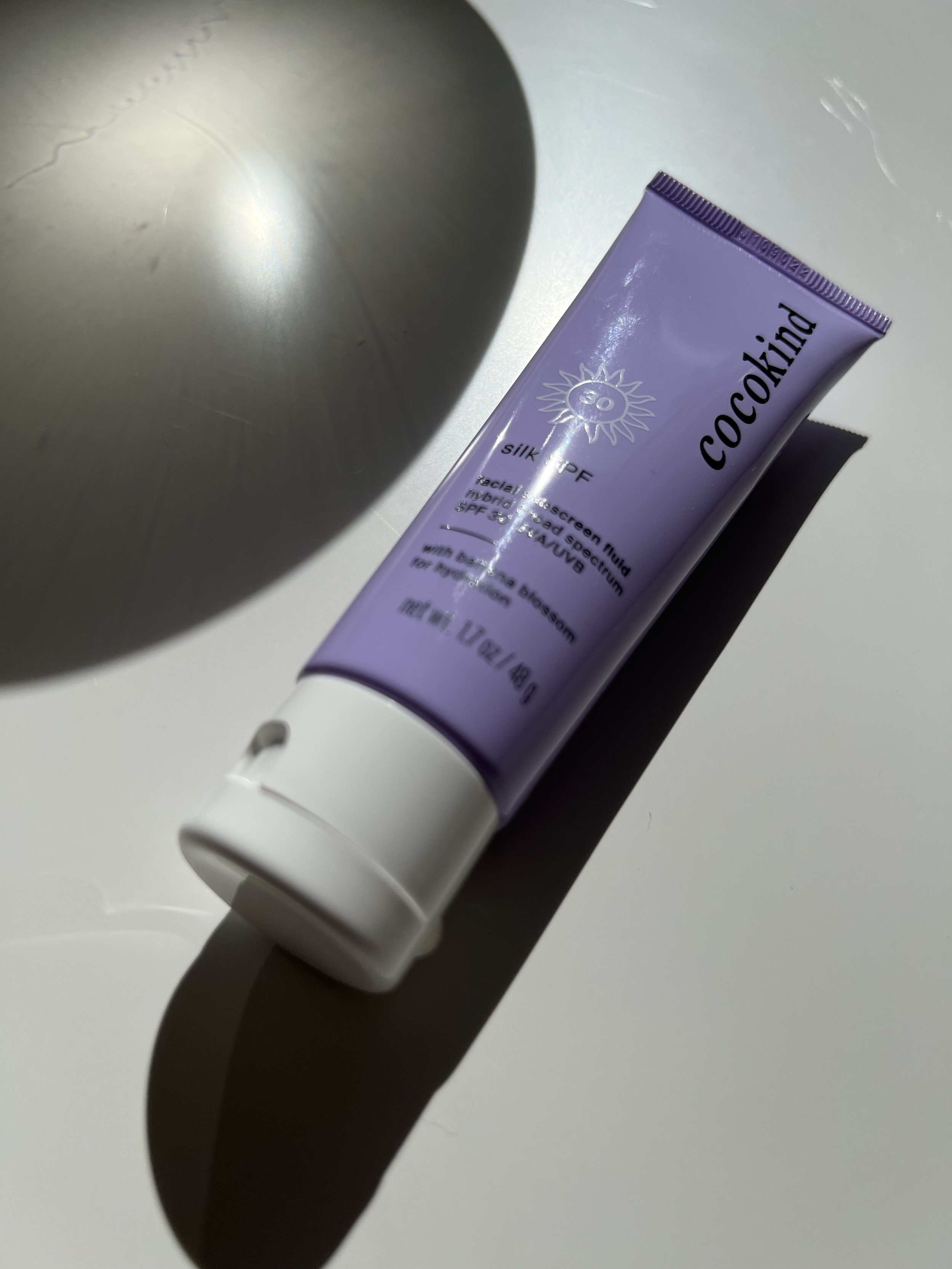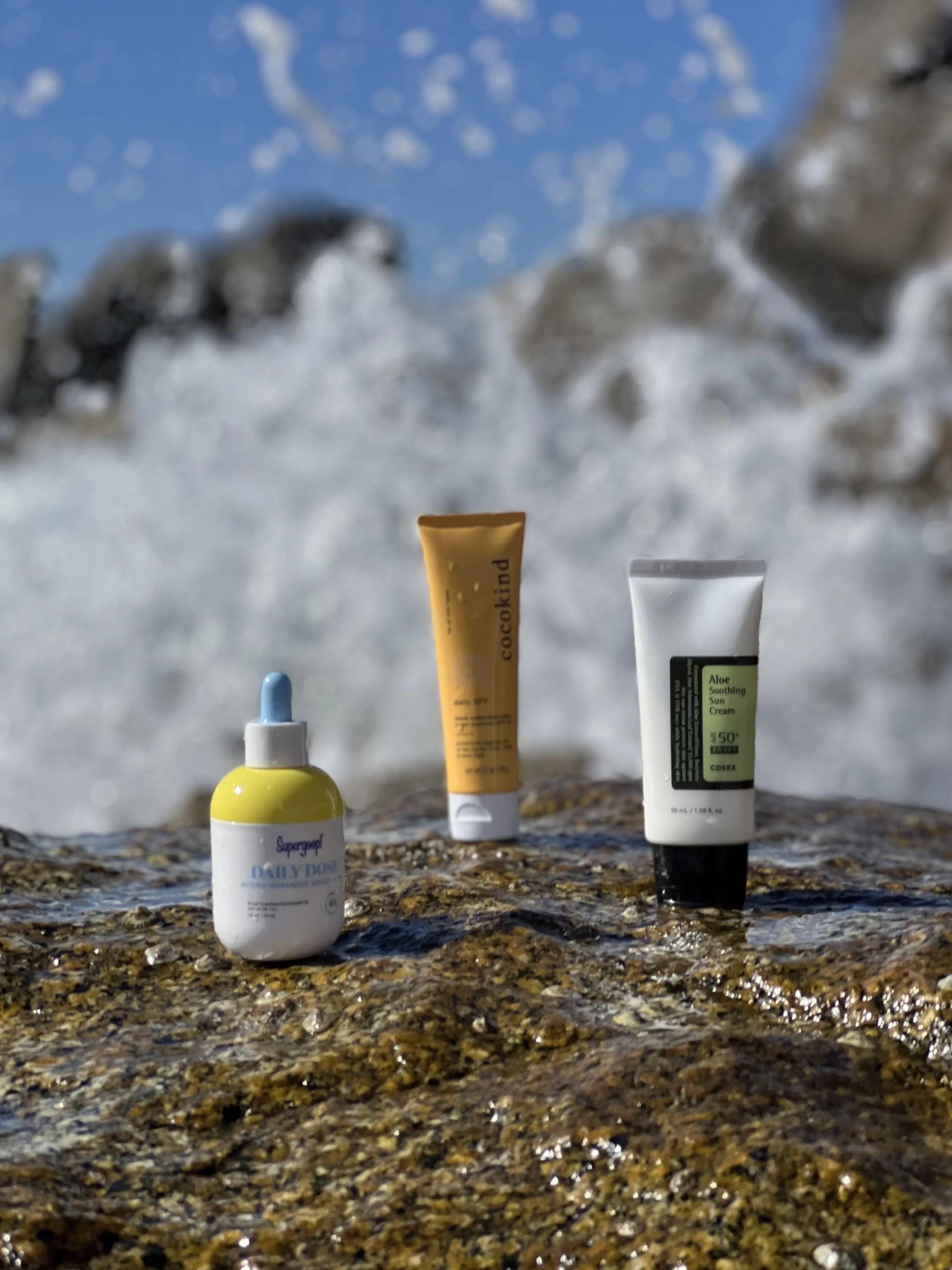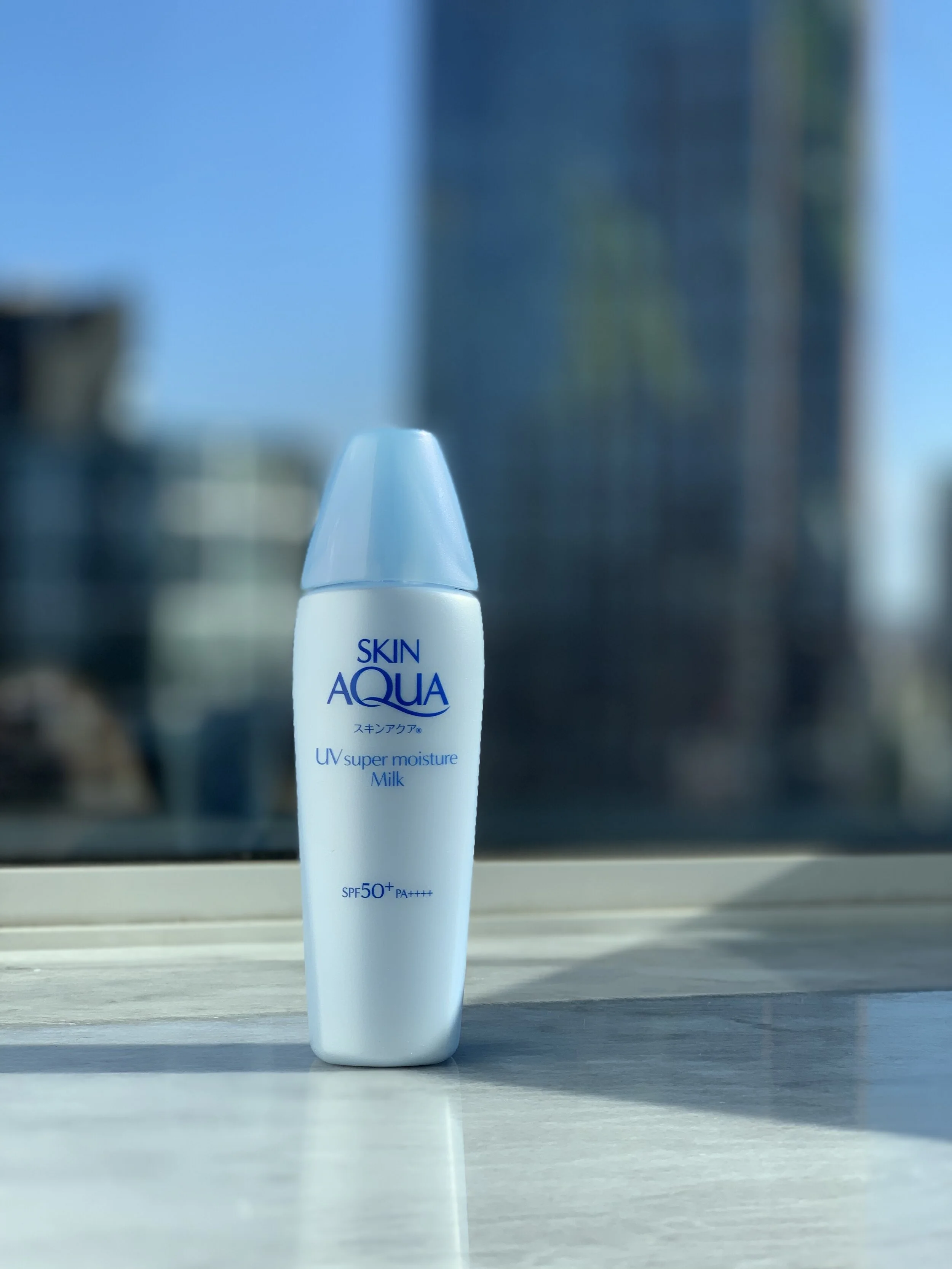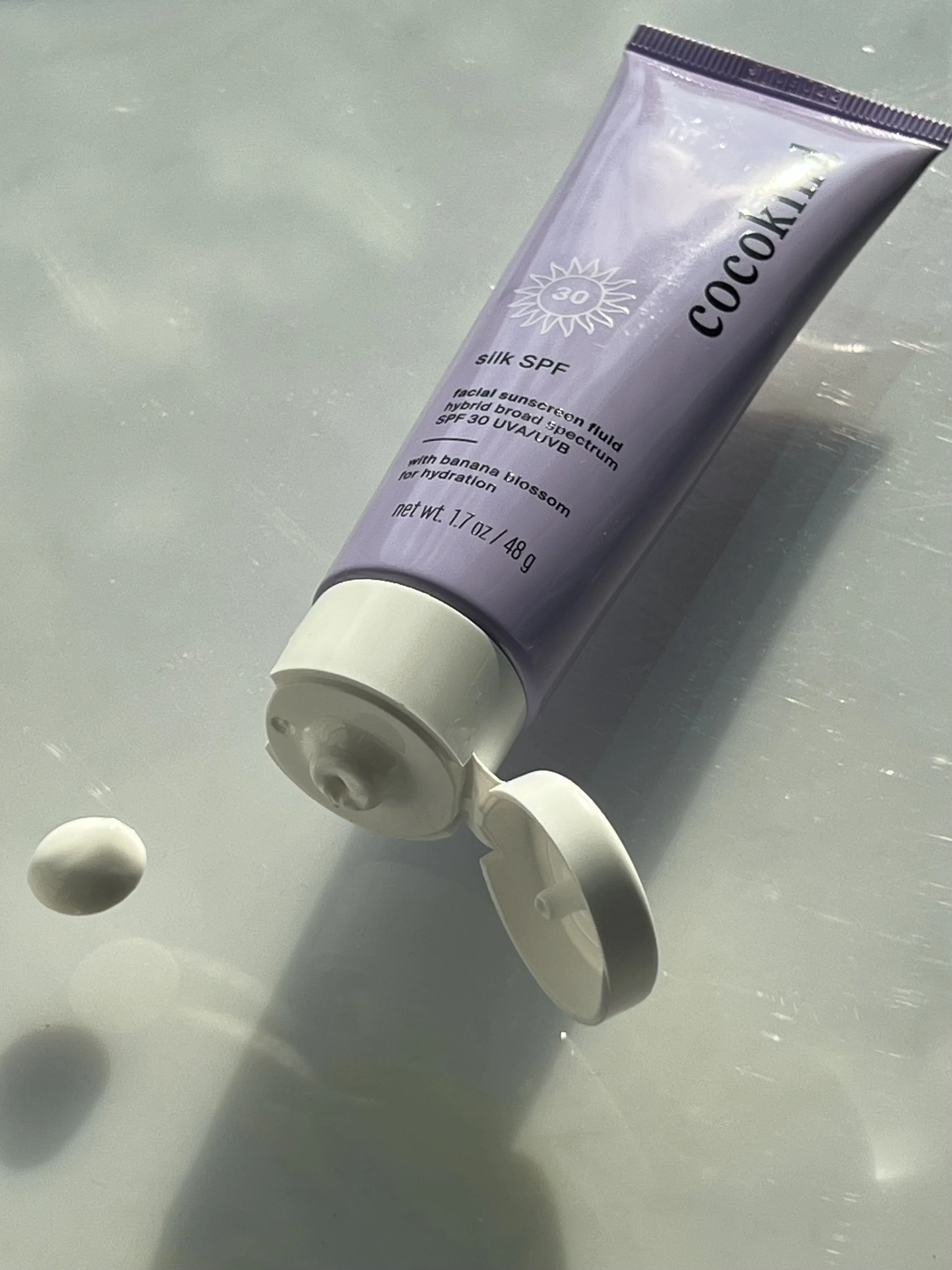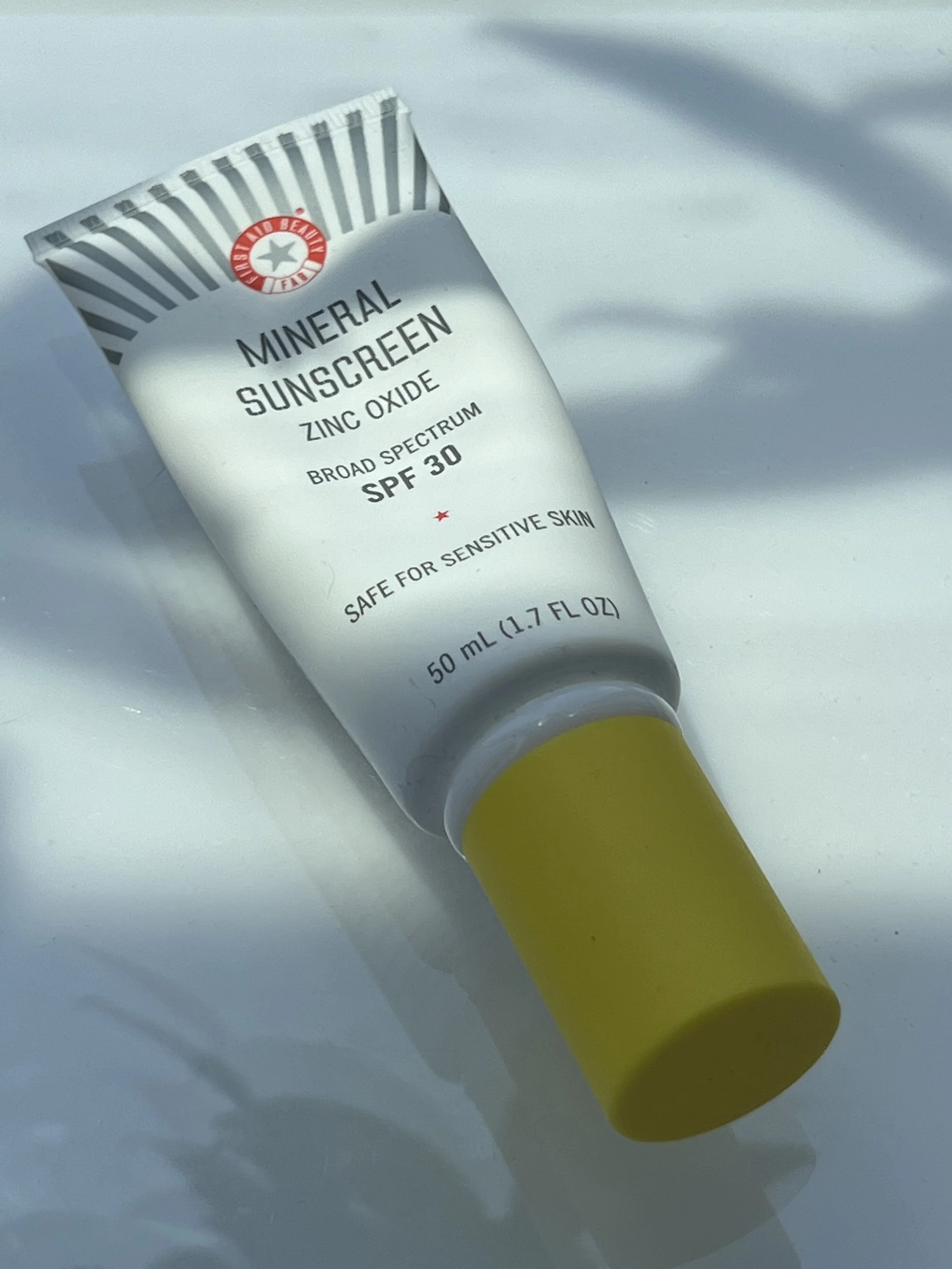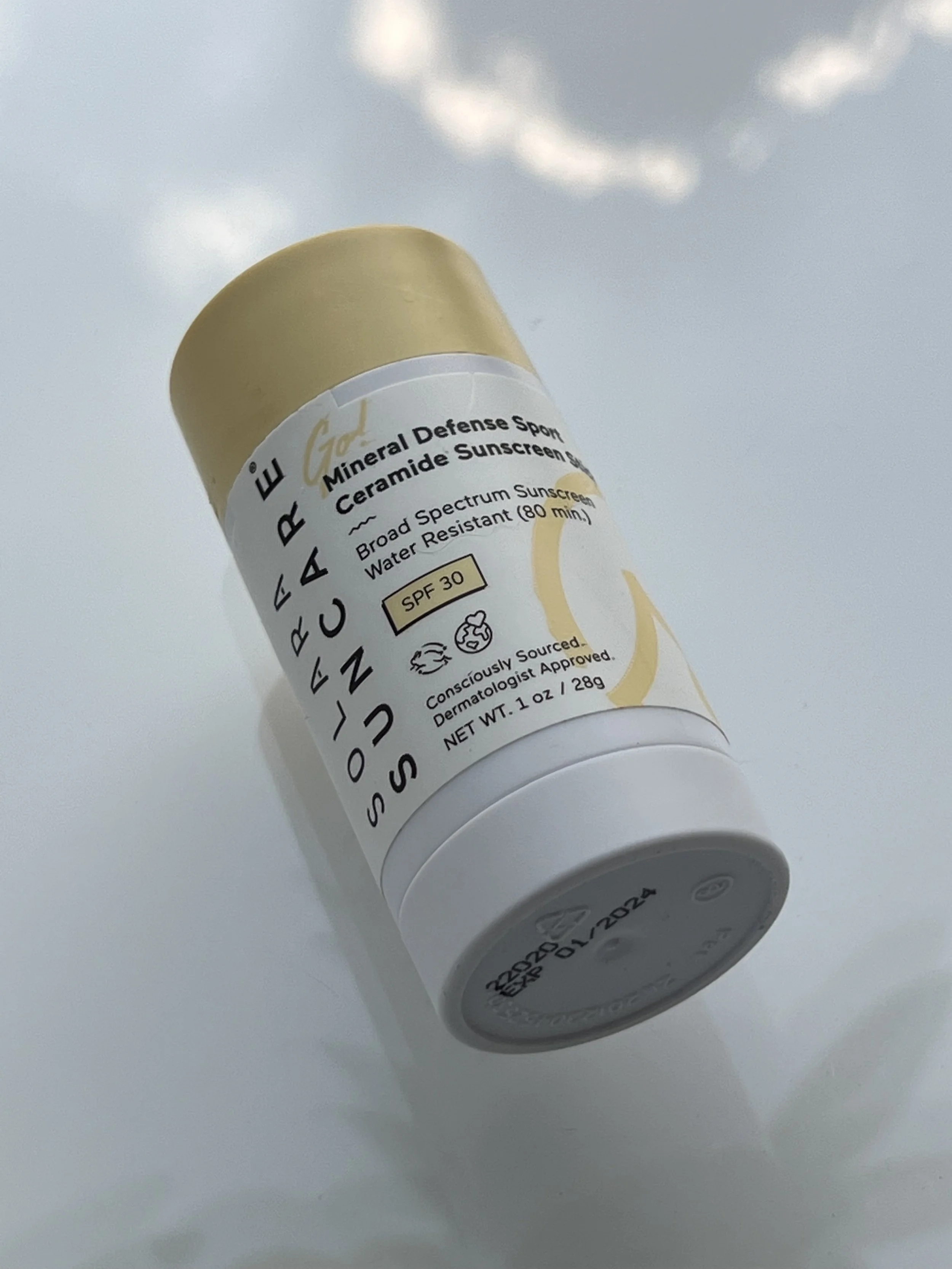PRODUCT REVIEW: COCOKIND SILK SPF - BEST SUNSCREEN FOR OILY SKIN, BEST SUNSCREEN WITH NO WHITE CAST
COCOKIND | SILK SPF FACIAL SUNSCREEN FLUID
This review was originally part of my blog article titled, New Summer Sunscreens I Can’t Put Down! You can still catch the full piece here.
—
As I’ve often said, a well-formulated sunscreen is one of very few true anti-aging products – something skincare marketers never claim in their advertising or their product messaging.
There’s a whole billion dollar industry dedicated to over-hyped, over-priced “anti-aging” products — most of them ineffective and driven by big marketing dollars.
Millions are spent annually by big beauty conglomerates like Estee Lauder, Shiseido, Coty and L’Oreal to convince consumers to spend money on minimally effective skincare products that claim to be “anti-aging”. That’s why consumers shell out $200 for a one-ounce jar of Creme de la Mer, which when you look closely at the INCI is little more than Vaseline with seaweed in it.
The Best Sunscreens For Face
What Ingredients Are Best for Anti-aging?
In addition to mineral and chemical sunscreen filters like Zinc Oxide, Titanium Oxide and Homosalate, antioxidant botanical extracts and antioxidant vitamins like Niacinamide, Retinol and Vitamin C deliver true, effective and clinically proven anti-aging benefits. Petroleum jelly and seaweed extract do not!
I know there is a lot of conversation around whether or not chemical sunscreens are okay for the skin and the body — and which is better, a chemical or mineral sunscreen. Honestly, whether your sunscreen is mineral, chemical or a hybrid matters little. What matters is that you find a sunscreen you love so much that you wouldn’t even think of skipping it in your morning skincare routine.
I look forward to applying a sunscreen as the last step of my morning routine. To me, it’s like the period at the end of a sentence. Make that an exclamation point!
PRODUCT REVIEW: COCOKIND DAILY SPF MINERAL SUNSCREEN SPF 32 - BEST MINERAL SUNSCREEN FOR FACE
What’s the Difference Between Mineral and Chemical Sunscreens?
While I prefer a mineral sunscreen, it’s not a dealbreaker for me. What’s most important is that you love using your facial sunscreen product. If you love using a chemical sunscreen, that’s perfectly okay. One of my all-time favorite daily sunscreens for face is the Supergoop! Daily Dose Vitamin C + SPF 40 Sunscreen Serum PA+++ — a 100% chemical facial sunscreen that’s such a pleasure to use. As crazy as it sounds, I look forward to applying it! (You can catch my review of Daily Dose on the blog here.)
PRODUCT REVIEW: SUPERGOOP! ULTRA DAILY DOSE VITAMIN C + SPF 40 SUNSCREEN SERUM PA+++
What’s the difference between a mineral sunscreen and a chemical sunscreen – and is a mineral sunscreen better than a chemical sunscreen?
For helpful insights, there’s an excellent article by the experts on the Paula’s Choice Research Team titled, Mineral vs. Synthetic Sunscreen Ingredients. (It’s available here.) In the piece, the experts explain the differences and benefits between the two — and even dispel a myth or two.
The two types of sunscreen ingredients are mineral and synthetic [chemical], and both are equally protective. Further reassuring is that each can be included in formulas created for every skin type. For example, if you have normal to oily skin, there are weightless, non-greasy options; if you have normal to dry skin, it’s possible to find skin-smoothing, hydrating SPF products.
What’s the Difference Between Mineral and Synthetic Sunscreen Ingredients?
The differences aren’t about which type is more effective; rather, it comes down to personal preference and how sensitive your skin is—mineral sunscreens are considered the most gentle options.
Mineral sunscreens: There are only two mineral sunscreen ingredients: titanium dioxideand zinc oxide. They work in skin's uppermost layers to both absorb and, to a lesser extent, deflect and scatter the sun’s harmful rays. These mineral ingredients are sometimes referred to as physical sunscreens or physical blockers, although that’s not a factual representation of how they work.
Synthetic sunscreens: There are over 30 synthetic sunscreen ingredients, all of which absorb into the top layers of skin, where they work similar to mineral sunscreens: by scattering and deflecting the sun’s harmful rays, and by converting UV rays into heat and “deactivating” them. (Don’t worry, you won’t feel a thing.) Common synthetic sunscreen ingredients include oxybenzone, octinoxate, octisalate, and avobenzone. These are sometimes labeled “chemical sunscreens,” which is both misleading and false. All skin care ingredients, even water, are chemicals.
—
Which Sunscreen is Best?
As we said, the right sunscreen for you is the one you’ll look forward to applying daily. It should be rated SPF 30 or higher and provide broad-spectrum protection to prevent damage from the sun’s killer UVA and UVB rays. Beyond that, to make an informed choice, you need to know how your skin type responds to different sunscreen ingredients and textures: those containing mineral actives, synthetic actives, or a combination of both.
Mineral sunscreens:
Begin to work immediately on application, but must be absorbed to be most effective and to ensure they don’t wipe off on clothing.
Have almost no risk of irritating skin.
May leave a white cast, especially on darker skin tones, but the best pure mineral sunscreens go on almost sheer.
May need more careful, liberal application because of the way they work in formulas. So, go ahead, slather these on for brilliant protection!
Do not penetrate past skin's uppermost layers.
Synthetic sunscreens:
Begin to work immediately on application, but must be absorbed to be most effective and to ensure they don’t wipe off on clothing.
Are generally found in products with thinner textures.
Tend to be preferred for water-resistant formulas because they don’t turn milky-looking when you sweat or get wet. But, as with any sunscreen, you must reapply them often.
Can be sensitizing for those with extra-sensitive skin.
Can penetrate the skin and be absorbed in small amounts that are not shown to have health risks.
Read the full article here.
The Most Important Product You're (Probably) Not Using!
I’ve been knee-deep in facial sunscreens over the last several weeks. I kicked off the summer season with product reviews of my top picks of tinted sunscreens for face.
The 2022 best summer sunscreens?
Cocokind’s Silk SPF Facial Sunscreen Fluid, the Bliss Block Star Invisible Daily Sunscreen and First Aid Beauty’s Mineral Sunscreen Zinc Oxide Broad Spectrum SPF 30.
The Cocokind Silk SPF Facial Sunscreen Fluid was only recently introduced by the brand. I was already a big fan of Cocokind’s first-ever sunscreen for face, the Daily SPF Mineral Sunscreen SPF 32 — a straight up mineral sunscreen with a 21% level of Zinc Oxide.
With its blend of moisturizing plant oils and humectants, the Daily SPF formula has such an elegant texture and is a real pleasure to use. And a sunscreen that’s a pleasure to use means you’re more likely to use it, right? Catch my review of Cocokind’s Daily SPF on the blog here.
I was first introduced to Cocokind about a year ago and have loved literally everything that’s come my way. Cocokind’s first sunscreen for face, the Daily SPF Mineral Sunscreen SPF 32, was a personal favorite on my trip to Cabo back in February at the start of the year. I featured it in a blog article titled, Three Amazing Sunscreens I Took with Me to Cabo From Supergoop, Cocokind And Cosrx. (You can catch it here.)
I can only imagine the conversation around the table at the Cocokind offices. Everyone loves the Daily SPF, but we know it’s going to be too thick for most people when the weather heats up. Who’s gonna want to use it in the summer?
THREE AMAZING SUNSCREENS I TOOK WITH ME TO CABO FROM SUPERGOOP, COCOKIND AND COSRX - BEST SUNSCREENS FOR FACE
And they’d be right. So it makes complete sense to me that Cocokind would come out with something much lighter and much more comfortable on a hot, humid day. The Cocokind Silk SPF Facial Sunscreen Fluid is just right! Introduced only a few weeks ago at the start of the summer season, the Silk SPF Facial Sunscreen Fluid is super lightweight with, as the name indicates, a more fluid texture.
While it’s got fluid in the name, don’t be misled into thinking it’s as light as the iconic Skin Aqua Super Moisture Milk – the cult Japanese sunscreen that I often joke may be made from alien technology. There’s literally nothing as light as that one. Of course, it’s likely really hot on that alien planet.
PRODUCT REVIEW: SKIN AQUA SUPER MOISTURE MILK SPF 50 – ONE OF THE BEST SUNSCREENS FOR OILY SKIN
No matter, Cocokind’s Silk SPF Facial Sunscreen Fluid is light enough for most of us on a summer day — and ideal for oily skin year-round. It’s what’s termed a hybrid sunscreen; that is, one which is formulated with both chemical and mineral sun filters. In the case of Silk SPF, there’s 10.5% Zinc Oxide and 10% Homosalate for solid SPF 30 broad-spectrum protection against UV damage.
And, unlike the brand’s Daily SPF, there are relatively few plant oils in the formula – with only Caprylic/Capric Triglyceride appearing in the INCI. A common alternative to mineral oil and silicone in skincare, it’s an oily, fatty alcohol derived from palm kernel or coconut oil.
Also listed as Coco-caprylate, according to the experts on the Paula’s Choice Research Team the fatty alcohol “is the mixture of esters that occur when the fatty alcohols derived from coconut alcohol reacts with the fatty acid caprylic acid.” I love science!
While it’s light on moisturizers, Cocokind’s Silk SPF Facial Sunscreen Fluid is heavy on hydrators, making it ideal for summer. The most notable hydrating humectant in the formula is Glycerin, which is really experiencing its time in the sun. Suddenly, Glycerin is everywhere! And I love that.
Glycerin has been used in skincare for a million years. As such, it’s not the sexiest, coolest, or most exciting ingredient. And skincare marketers rarely call it out because “everyone uses it.” So what! It’s effective, inexpensive and feels great on the skin. In fact, I’m guilty of not paying enough attention to it myself.
Truthfully, there are only a handful of humectants as effective as Glycerin. Among the best humectants in skincare are Hyaluronic Acid, honey, aloe, Snow Mushroom Extract, Beta-Glucan and tried-and-true Glycerin.
I found a really interesting article on humectants titled, The Best Humectants to Use in Natural Skincare. You can catch it here if you’re interested.
What Is Glycerin and Is Glycerin the Same as Hyaluronic Acid?
According to the experts on the Paula’s Choice Research Team, Glycerin is one of the best ingredients used in skincare and among the best water-binding humectants for preventing dehydrating trans-epidermal water loss, or TEWL. Because it’s so effective, Glycerin is considered as good a humectant as Hyaluronic Acid.
Glycerin, also called glycerol or glycerine, is a humectant that’s present in all natural lipids (fats), whether animal or vegetable. It can be derived from natural substances by hydrolysis of fats and by fermentation of sugars; it also can be synthetically manufactured, which is usually the case with modern-day skin care products, as doing so results in highly purified glycerin.
Glycerin is a skin-replenishing and skin-restoring ingredient, meaning it is a substance found naturally in skin, helping to establish normal balance and hydration. It’s one of the many substances in skin that helps maintain a healthy look and feel, defending against dryness and working to maintain skin’s moisture level. Essentially, glycerin is a master at hydration, and works best when combined with other replenishing and emollient ingredients.
Some people wonder whether using products with glycerin takes too much water from skin when there isn’t enough humidity in the air. This can occur with pure glycerin (that is, at a 100% concentration - an amount that’s never used in skin care products). Any humectant (including glycerin) used in pure form can increase water loss by attracting water from the lower layers of skin into the surface layers when the climate is too arid (low humidity). For this reason, glycerin and humectants are typically used in concentrations of 5% or less and always combined with other ingredients to soften skin. In fact, glycerin combined with other emollients and/or oils is a fundamental cornerstone of most moisturizers. However, amounts of 10% or greater can be used in clinical circumstances for skin healing.
What I like about it: The Cocokind Silk SPF Facial Sunscreen Fluid is the perfect balance of texture and efficacy in a summer sunscreen. It’s super lightweight and supremely hydrating. It’s an absolute pleasure to use and the ideal alternative to the brand’s heavier 100% mineral sunscreen, Daily SPF.
What I don’t like about it: It’s pretty much perfect.
Who it’s for: All skin types, even very oily and acne prone.
SHOP THE BLOG: Purchase the Cocokind Silk SPF Facial Sunscreen Fluid for $25 here.
The Ingredient List of the Cocokind Silk SPF Facial Sunscreen Fluid:
Zinc Oxide 10.5%, Homosalate 10%
water/aqua/eau, caprylic/capric triglyceride, glyceryl stearate se, coconut alkanes, glycerin, coco-caprylate/caprate, decyl glucoside, oryza sativa (rice) starch, musa sapientum (banana) flower extract, polyhydroxystearic acid, polyglyceryl-3 polyricinoleate, isostearic acid, lecithin, xanthan gum, hydroxyethylcellulose, caprylyl glycol, caprylhydroxamic acid, sodium benzoate, citric acid, disodium phosphate, sodium phosphate.
SHOP THE BLOG
WATCH MY VIDEO REVIEW OF
COOL CLEAN FACIAL SUNSCREENS TO KEEP US SAFE AND SMILING IN THE SUN
ON MY YOUTUBE CHANNEL HERE
WATCH MY VIDEO REVIEW
THE BEST NIACINAMIDE SERUMS FOR CLOGGED PORES AND A BRIGHTER COMPLEXION
ON MY YOUTUBE CHANNEL HERE
WATCH MY VIDEO REVIEW
THE SKINCARMA PRODUCT OF THE YEAR: BALM LABS 3-STEP REGIMEN - BEST ACNE REGIMEN, BEST CBD SERUM
ON MY YOUTUBE CHANNEL HERE
WATCH MY VIDEO REVIEW OF
SKINCARE HACKS: GLYCOLIC ACID IS THE NATURAL DEODORANT THAT WORKS!
ON MY YOUTUBE CHANNEL HERE
WATCH MY VIDEO REVIEW
COOL CLEAN FACIAL SUNSCREENS TO KEEP US SAFE AND SMILING IN THE SUN!
ON MY YOUTUBE CHANNEL HERE
WATCH MY VIDEO REVIEW
THE YEAR’S BEST VITAMIN C SERUMS WITH PAULA'S CHOICE, SUNDAY RILEY, THE INKEY LIST AND MORE!
ON MY YOUTUBE CHANNEL HERE
WATCH MY VIDEO REVIEW
THE BEST HYALURONIC ACID SERUMS FROM PAULA'S CHOICE, THE INKEY LIST, GHOST DEMOCRACY & MORE
ON MY YOUTUBE CHANNEL HERE
WATCH MY VIDEO REVIEW OF
A SELFCARE SUNDAY NOT FOR THE FAINT OF HEART – WITH THE PAULA’S CHOICE 25% AHA PEEL!
ON MY YOUTUBE CHANNEL HERE
WATCH MY VIDEO REVIEW
MY 2021 VITAMIN C PICKS + THE BEST VITAMIN C SERUMS TO BRIGHTEN UP THE COMPLEXION!
ON MY YOUTUBE CHANNEL HERE


